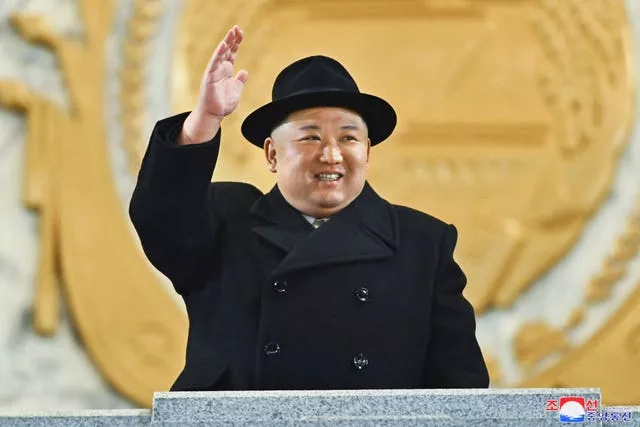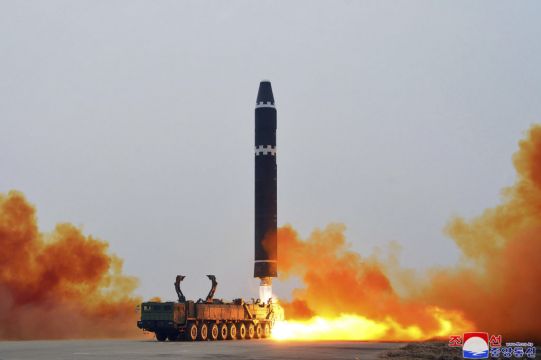North Korea has said its latest intercontinental ballistic missile (ICBM) test was meant to further bolster its “fatal” nuclear attack capacity against its rivals.
The United States responded by flying long-range supersonic bombers in a show of force later on Sunday for separate joint exercises with South Korean and Japanese warplanes.
The ICBM test, the North’s first missile test since January 1, signals it is using its rivals’ drills as a chance to expand its nuclear capability to enhance its leverage in future dealings with the United States. An expert says North Korea may seek to hold regular operational exercises involving its ICBMs.
North Korea’s official Korean Central News Agency (KCNA) said its launch of the existing Hwasong-15 ICBM was organised “suddenly” without prior notice at the direct order of leader Kim Jong Un on Saturday at dawn.

KCNA said the launch was designed to verify the weapon’s reliability and the combat readiness of the country’s nuclear force. It said the missile was fired at a high angle and reached a maximum altitude of about 5,770 kilometres (3,585 miles), flying a distance of about 990 kilometres (615 miles) before accurately hitting a pre-set area in the waters between the Korean Peninsula and Japan.
The steep-angle launch was apparently aimed at avoiding neighbouring countries. The flight details reported by North Korea, which roughly matched the launch details previously assessed by its neighbours, show the weapon is theoretically capable of reaching the mainland US if fired at a standard trajectory.
The Hwasong-15 launch demonstrated the North’s “powerful physical nuclear deterrent” and its efforts to “turn its capacity of fatal nuclear counterattack on the hostile forces” into an extremely strong one that cannot be countered, KCNA said.
Whether North Korea has a functioning nuclear-tipped ICBM is still a source of outside debate, as some experts say the North has not mastered a technology to protect warheads from the severe conditions of atmospheric re-entry. The North has claimed to have acquired such a re-entry vehicle technology.
The Hwasong-15 is one of North Korea’s three existing ICBMs, all of which use liquid propellants that require pre-launch injections and cannot remain fuelled for prolonged periods. The North is pushing to build a solid-fuelled ICBM, which would be more mobile and harder-to-detect before its launch.
The North’s launch came a day after it vowed an “unprecedentedly” strong response over a series of military drills that Seoul and Washington plan in the coming weeks.
In a separate statement on Sunday, Kim Yo Jong, the influential sister of Kim Jong Un, accused South Korea and the United States of “openly showing their dangerous greed and attempt to gain the military upper hand and predominant position in the Korean Peninsula”.
“I warn that we will watch every movement of the enemy and take corresponding and very powerful and overwhelming counteraction against its every move hostile to us,” Kim Yo Jong said.
North Korea has steadfastly slammed regular South Korea-US military trainings as an invasion rehearsal though the allies say their exercises are defensive in nature.
Some analysts say North Korea often uses South Korea-US drills as a pretext to test and modernise its weapons arsenals, which it believes is essential to win sanctions relief and other concessions from the United States.
Later on Sunday, US B-1B bombers and other aircraft separately trained with South Korean and Japanese fighter jets over and near the Korean Peninsula.
A South Korean military statement said Sunday’s training reaffirmed Washington’s “iron-clad” security commitment to South Korea.
North Korea is sensitive to the deployment of US B-1B bombers, which are capable of carrying a huge payload of conventional weapons.







